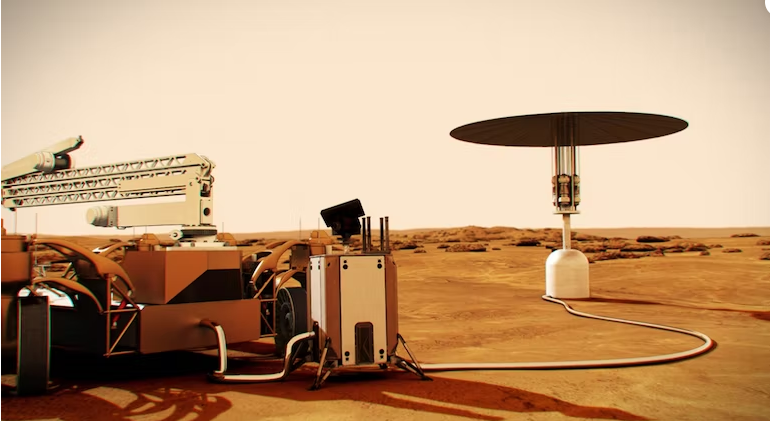Agreement paves way for cooperation on development and roadmap towards production
US space agency Nasa haas chosen three companies to provide an initial design concept for a fission surface power system. Courtesy Nasa.
Italy’s National Agency for New Technologies, Energy and Sustainable Economic Development (Enea) has signed an agreement with the Italian Space Agency (ASI) to design a “compact, light, reliable and safe” mini-nuclear reactor capable of producing energy for future lunar bases and the subsequent colonisation of Mars and deep space.
ENEA and ASI will outline the characteristics of the “made in Italy” reactor, identify possible operational scenarios such as lunar, Martian and deep space exploration and investigate critical technologies. They will carry out a cost-benefit analysis and define a R&D roadmap.
“The basic principles for the design of the reactor are modularity, easy expansion of available power and the redundancy of essential systems to guarantee maximum reactor safety,” Mariano Tarantino, head of ENEA’s division of nuclear safety and sustainability said.
Particular attention will be paid to minimising the weight of the system to make transport on board a cargo rocket possible. Mature technologies produced in Italy will be used for key components.
ENEA said ASI is “looking with interest” at the technology, which could contribute to solving energy problems in the exploration of other planets and for travel and exploration in deep space.
Nuclear reactors for space applications have been studied since the 1950s with prototypes produced in the US and Russia. Renewed interest in space exploration in the last two decades has contributed to increasing investment in the design of small reactors that could be used to guarantee independence and full functionality in “space outposts”, ENEA said.
In July, US Space agency Nasa chose three companies to provide an initial design concept for a fission surface power system that could be ready to launch to the Moon by the end of the decade.
Nasa Aiming For Long-Term Missions To Moon And Mars
Nasa said fission systems, which are relatively small and lightweight compared to other power systems, could enable continuous power regardless of location, available sunlight, and other natural environmental conditions. A demonstration of such systems on the Moon would pave the way for long-duration missions on the Moon and Mars.
Nasa’s Kilopower reactor unit, developed with US research centres including the Los Alamos National Laboratory generates energy through nuclear fission, capable of producing up to 10 kilowatts of electricity for at least 10 years – enough to supply a set of residential buildings. Four Kilopower reactors could satisfy the energy needs of a station on Mars.
A European Nuclear Society position paper published in September said if Europe is not to be left behind in the development of nuclear power systems for space it must find “sustained commitment and substantial investment over at least two decades”.
The paper said Europe has been dependent on the US for much of its space exploration activities.
It said the US, Russia, and China are all engaged in the development of nuclear technologies for applications in space and if Europe wants to keep its place as a potential partner in space exploration in the coming decades, it will need to take steps to develop its nuclear space capabilities.
Italy was a pioneer of commercial nuclear power and had four nuclear plants – Caorso, Enrico Fermi, Garigliano and Latina – providing almost 5% of the country’s electricity production share at their peak in 1986-1987.
Italy shut down the last of the plants, Caorso and Enrico Fermi, in July 1990 following a referendum in the wake of the 1986 Chernobyl disaster.
Umberto Minopoli, president of the Italian Nuclear Association (Associazione Italiana Nucleare, AIN) said recently that Italy needs to develop a national energy policy that includes restarting its nuclear power programme as it seeks to reduce dependence on fossil fuels and imports from Russia.
Roberto Adinolfi, president of Italy-based nuclear technology company Ansaldo Nucleare, said that despite Italy having no operating nuclear power plants since 1990, “the Italian nuclear supply chain is among the most important in Europe, it is highly competitive and it’s taking part in several European and international projects”.
